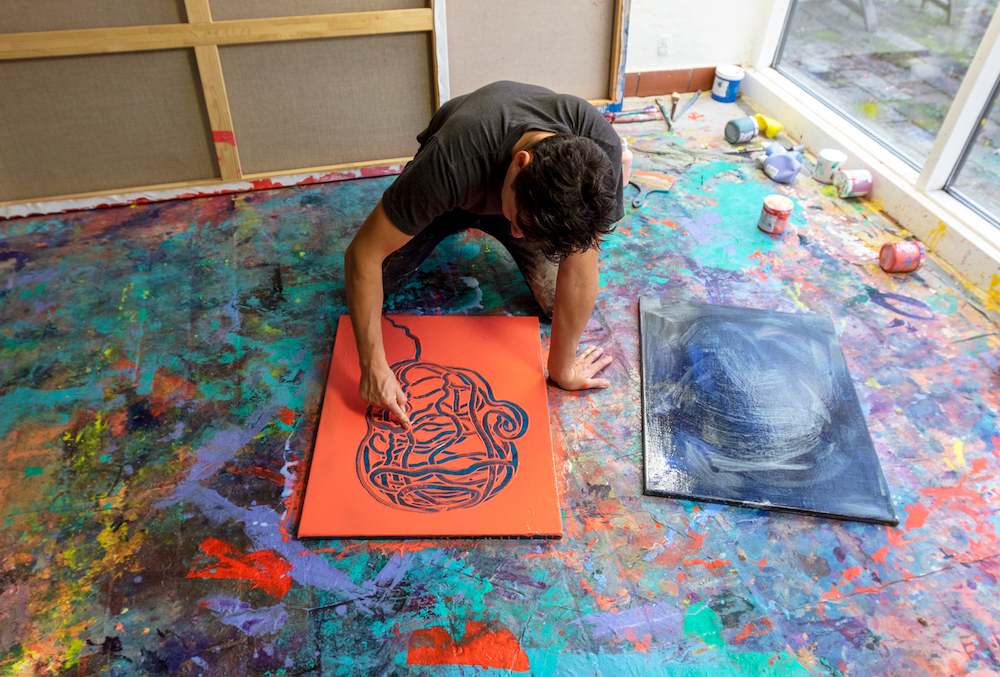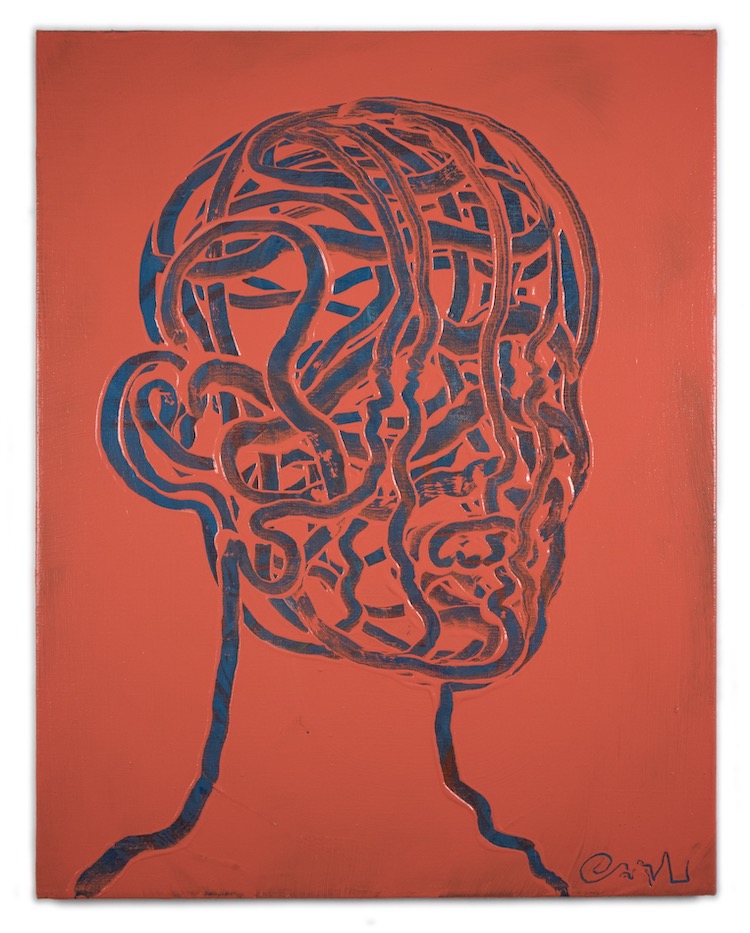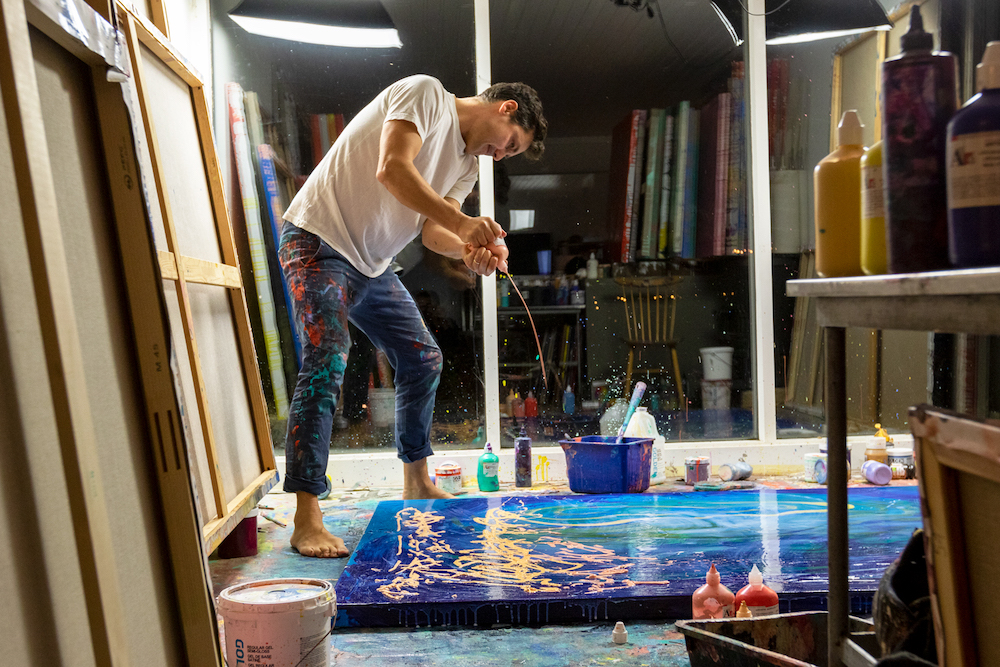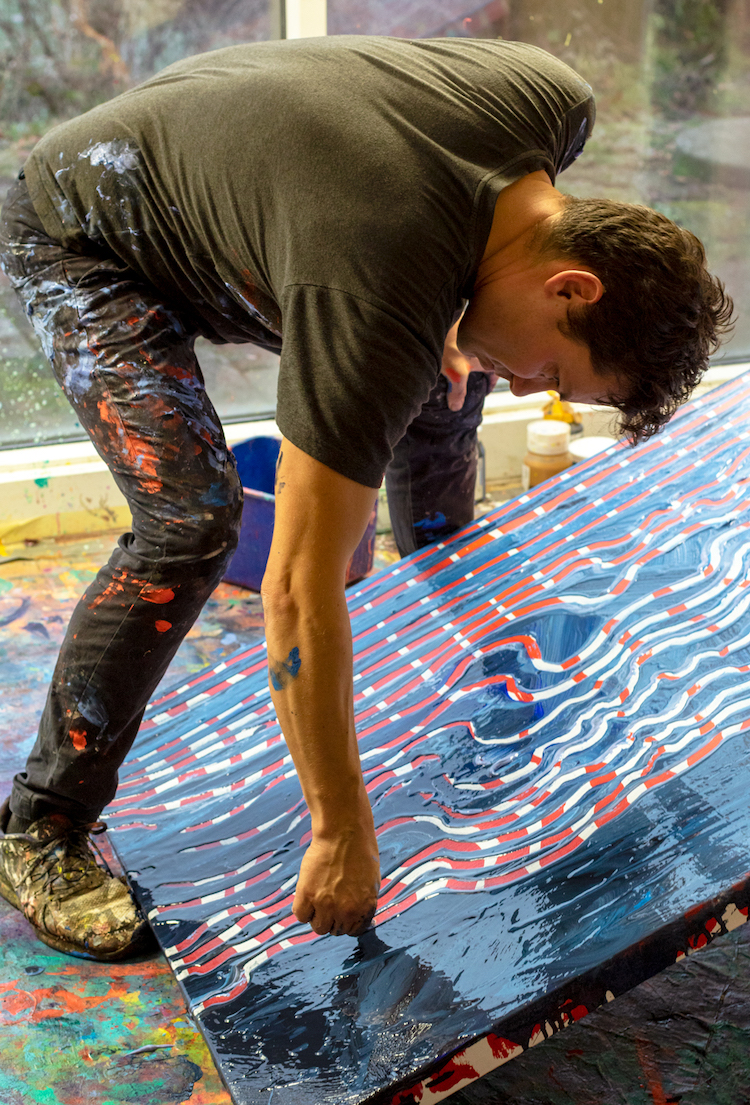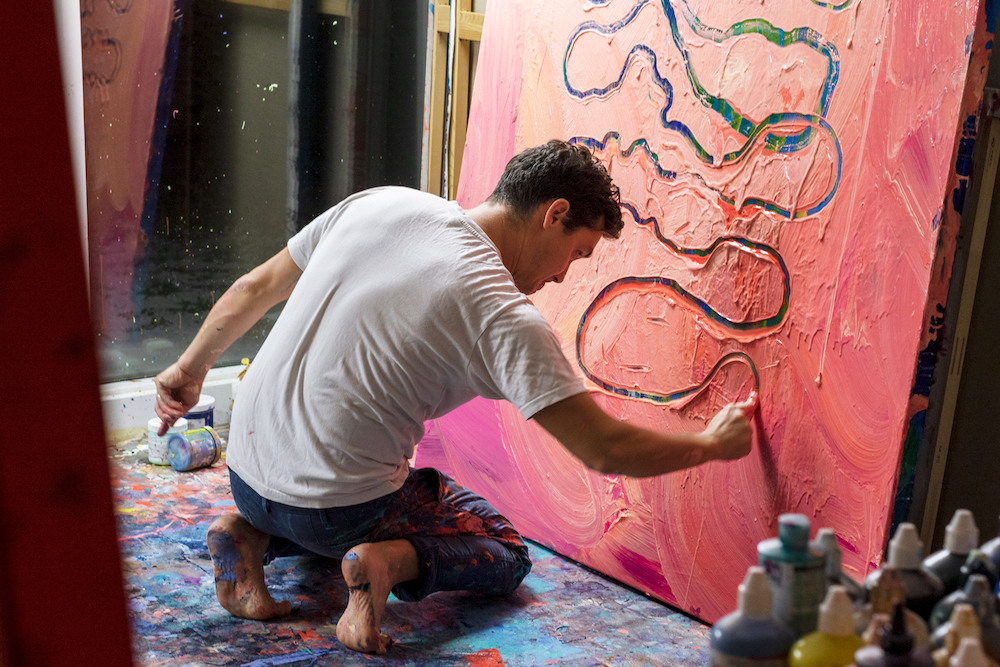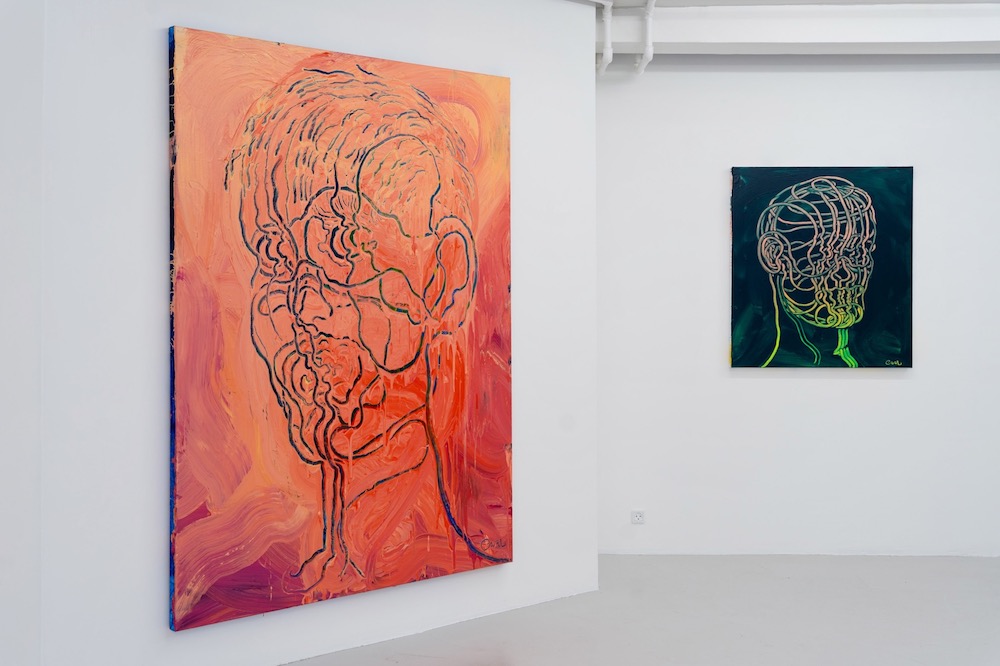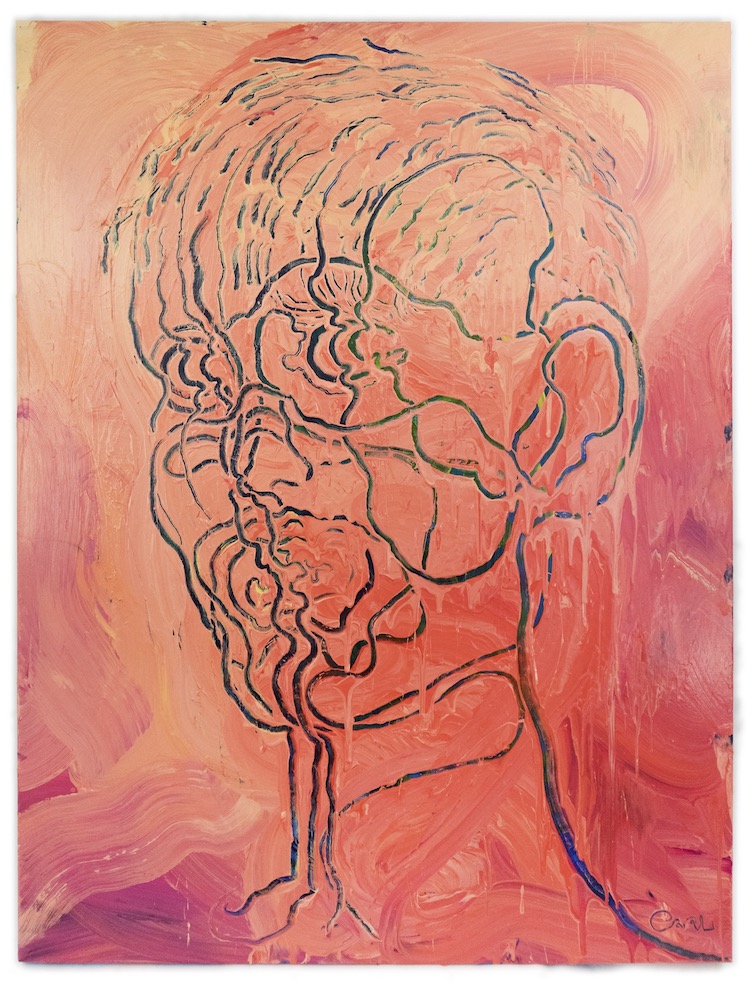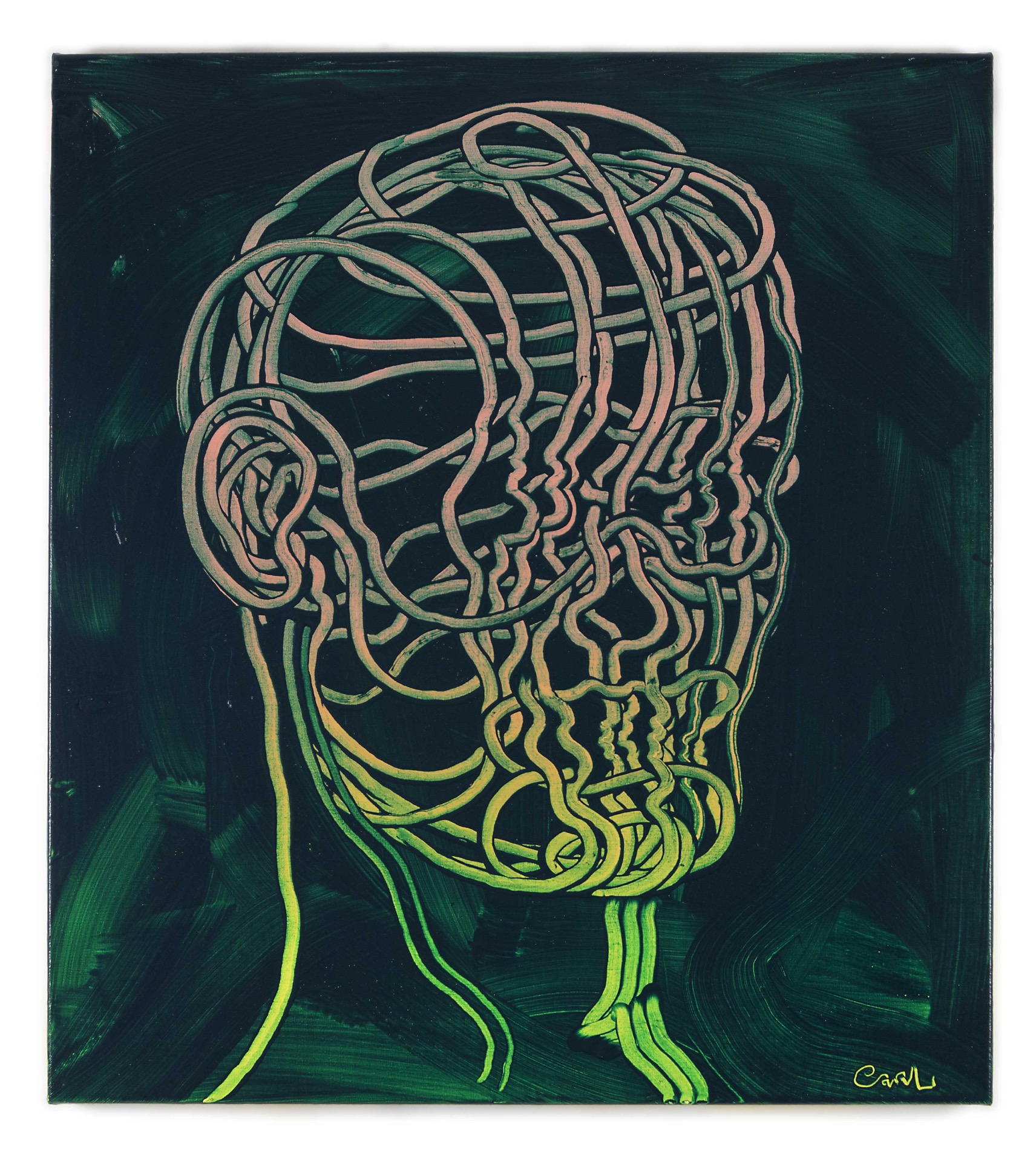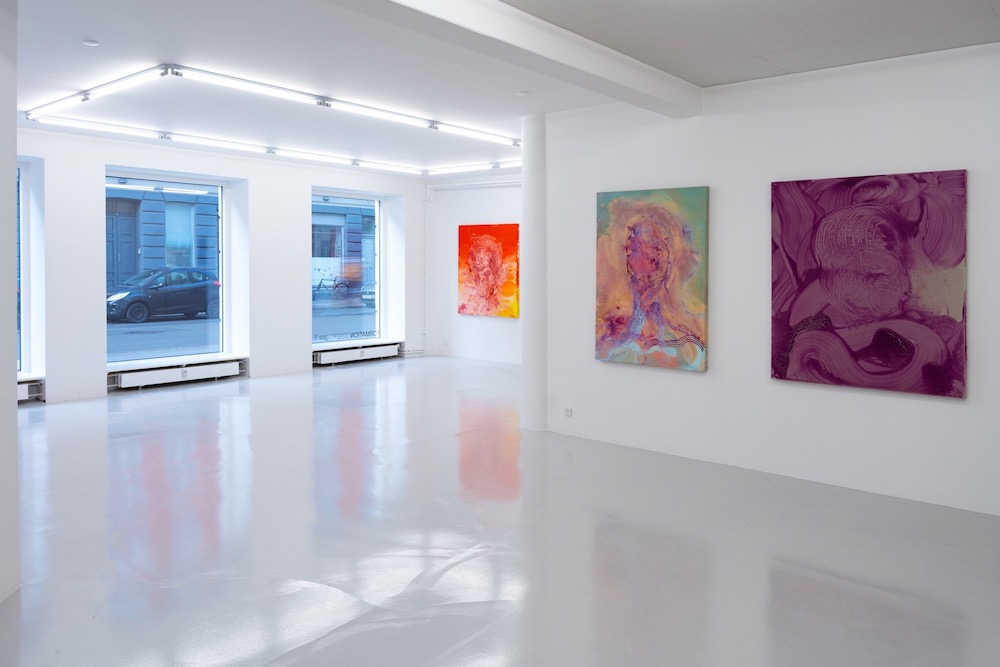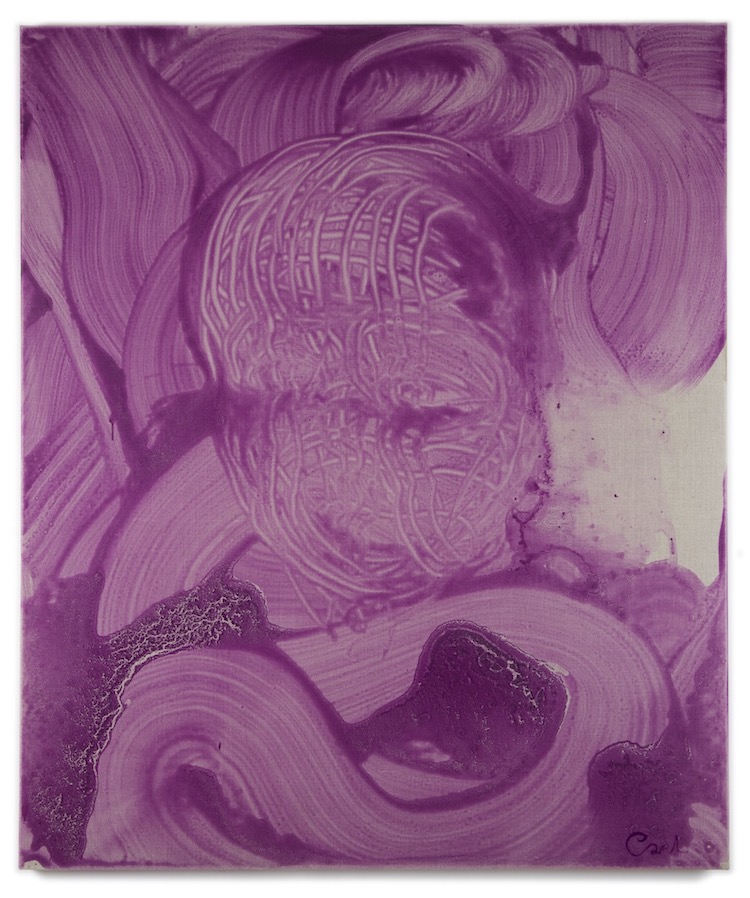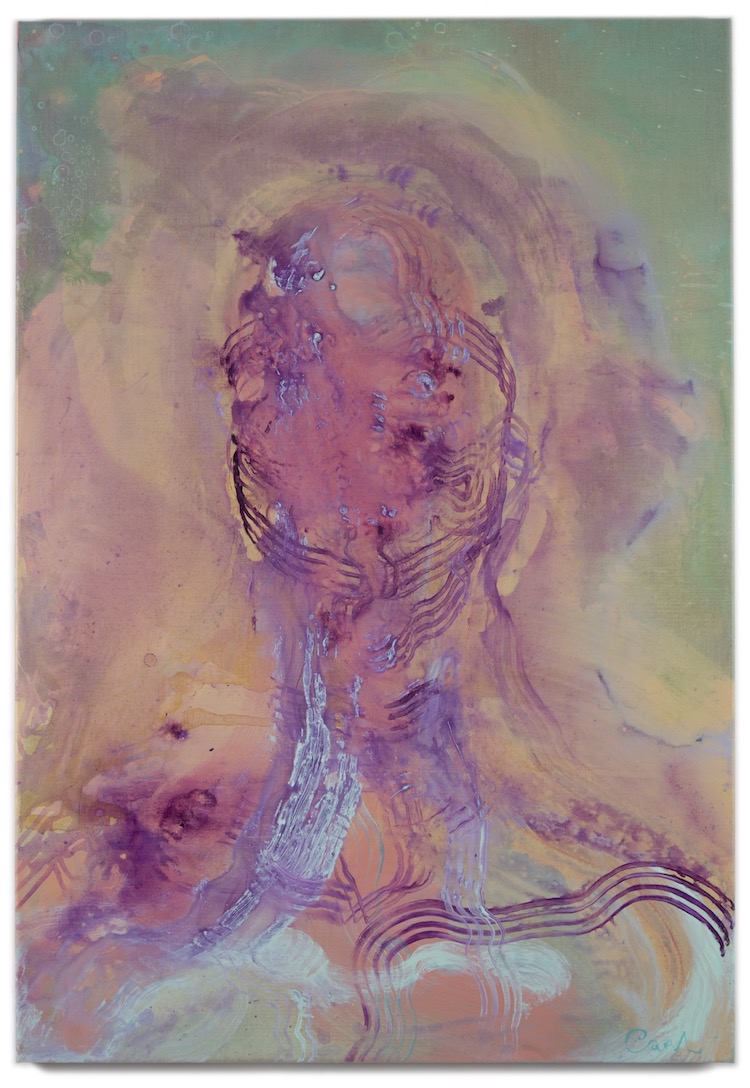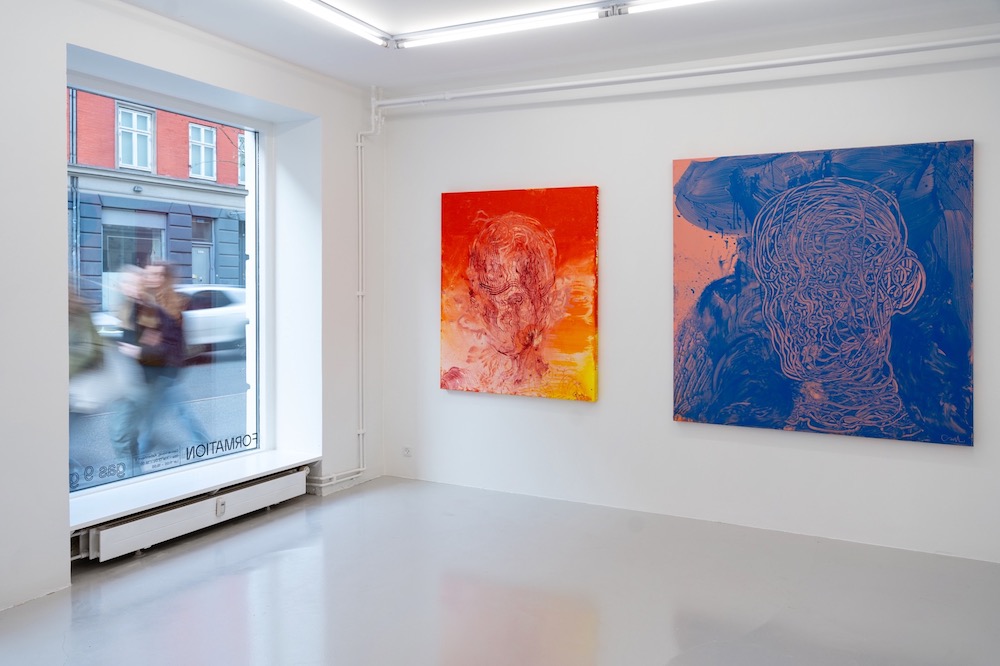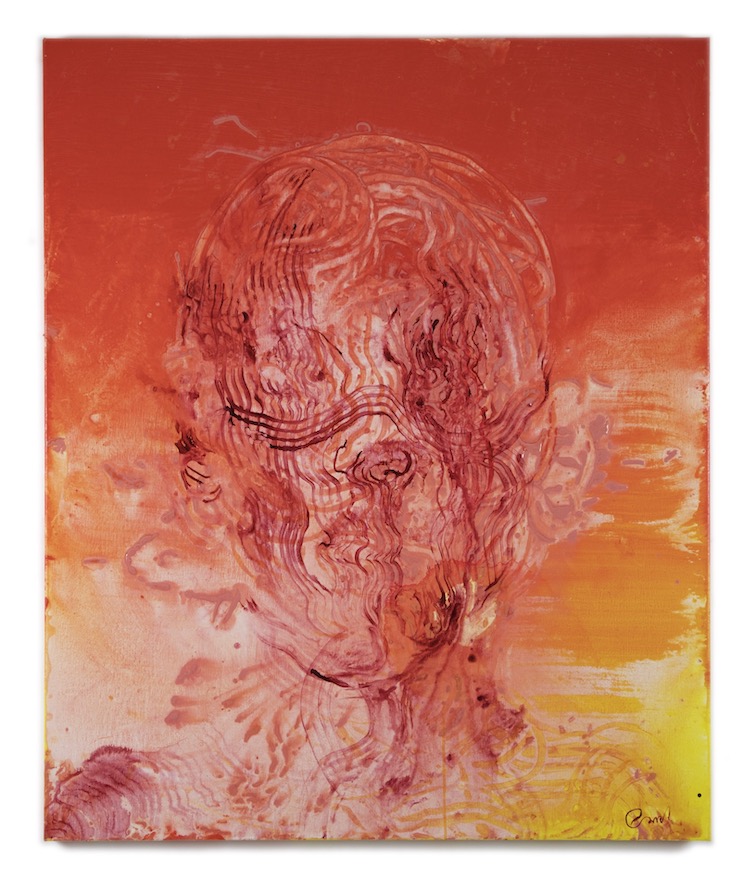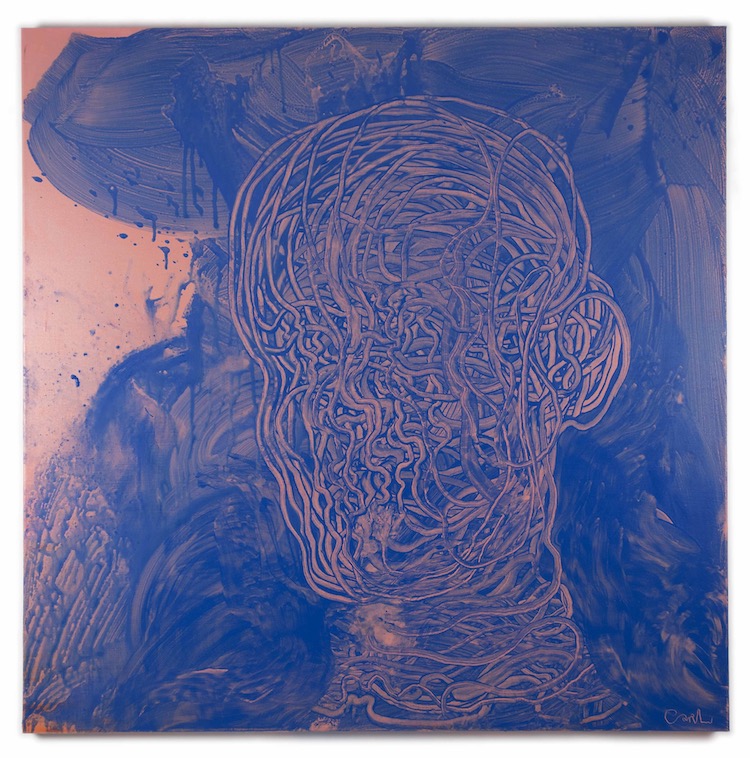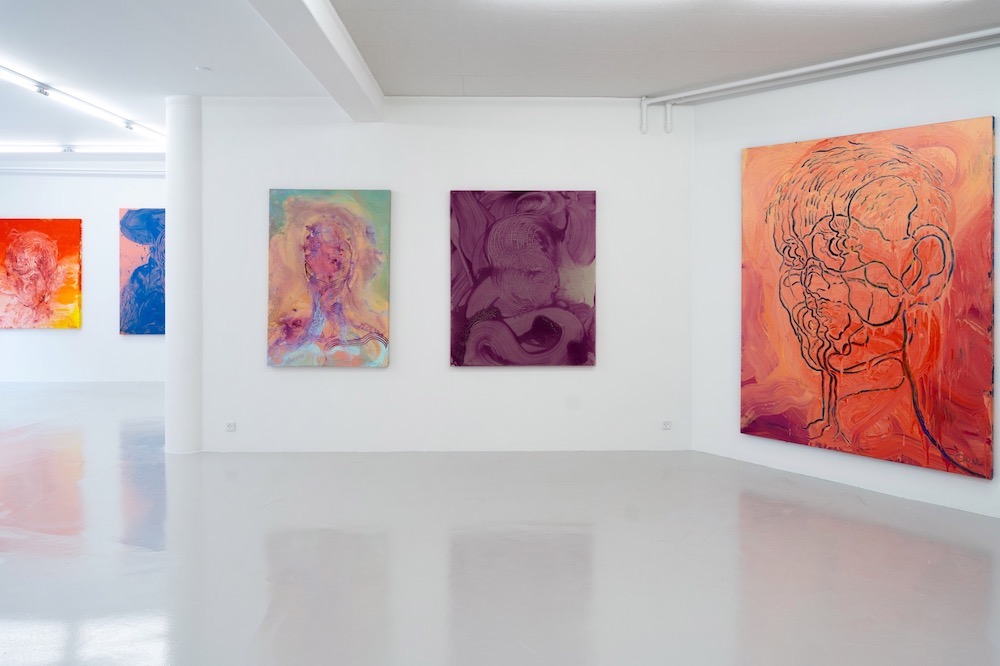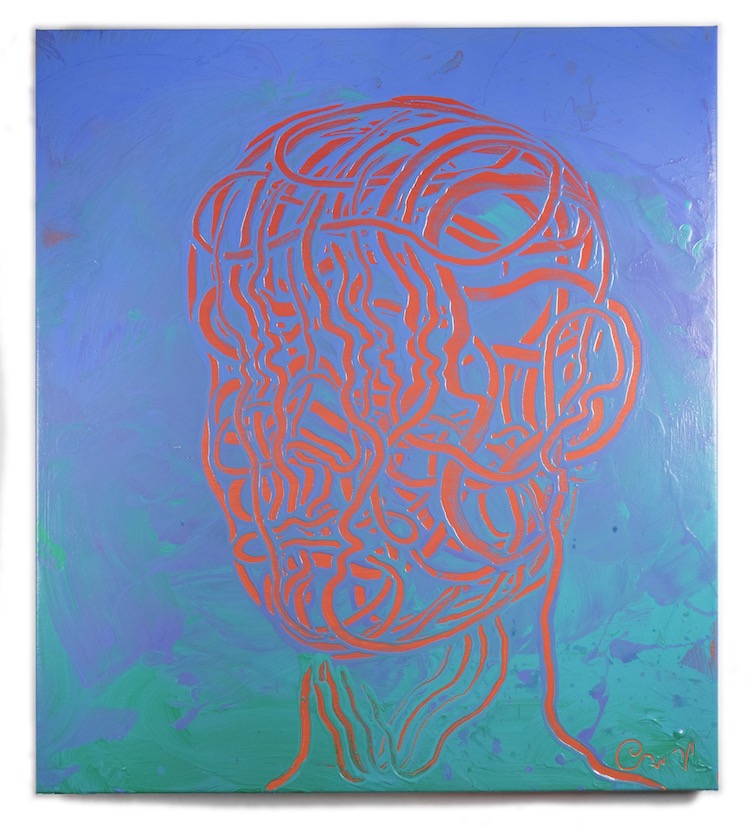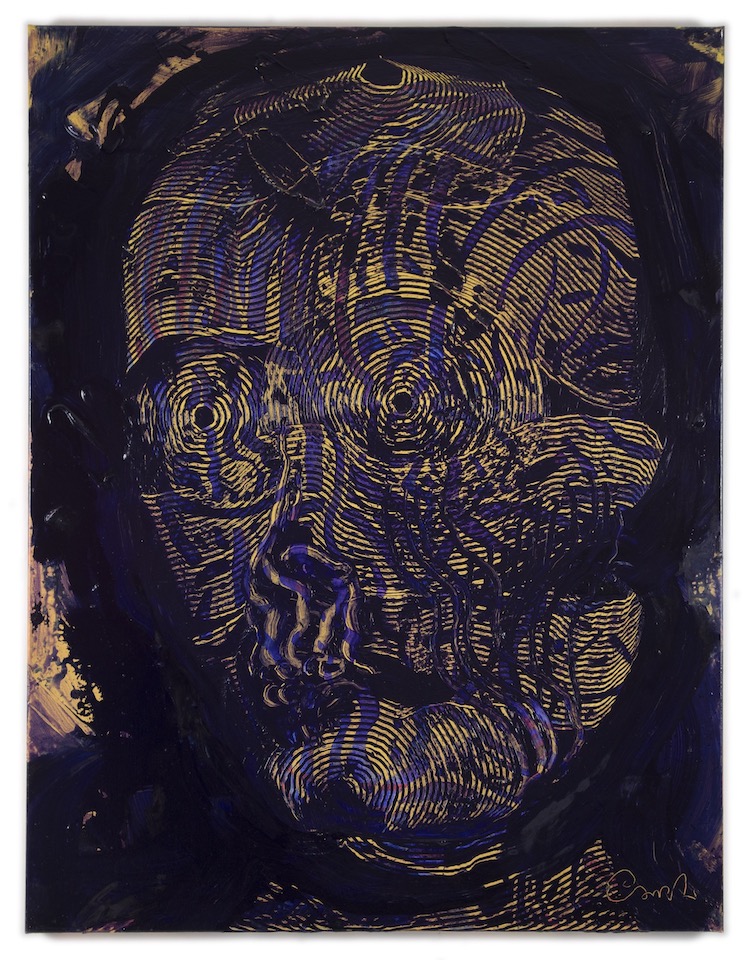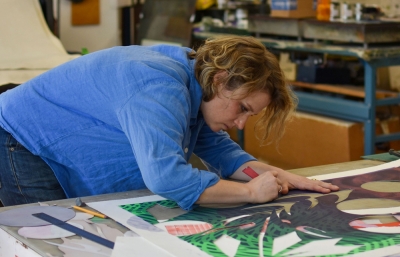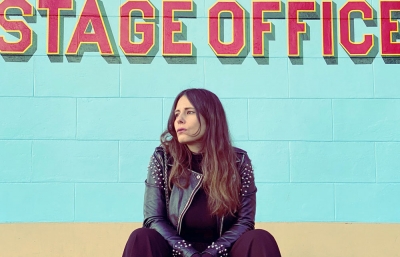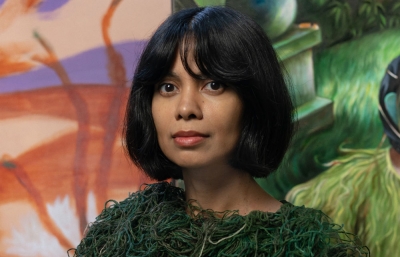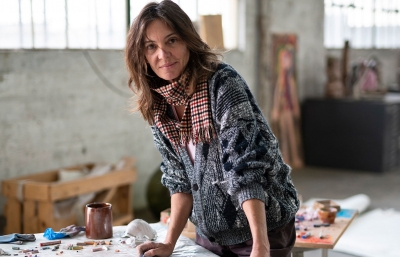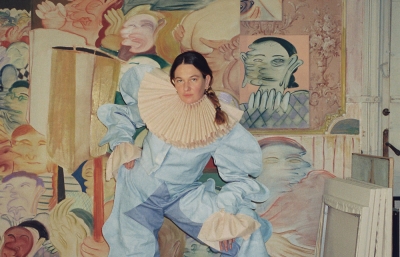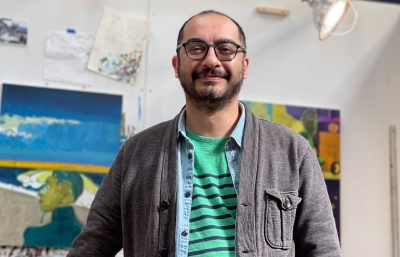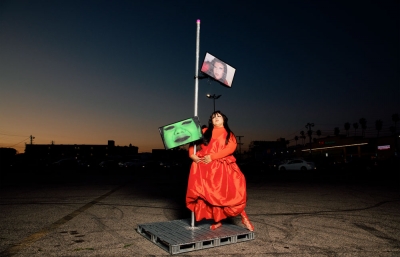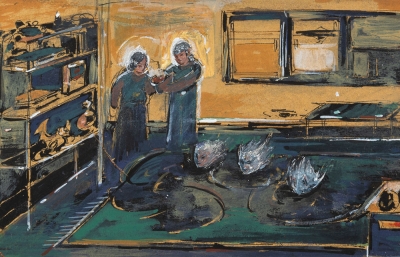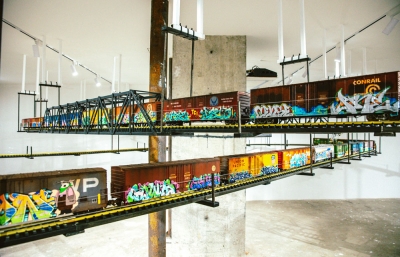It's been close to 4 years since we last checked with our good friend Carl Krull over in Denmark, and the past few years have been anything but unexciting for the Danish artist. After relocating with the family to the countryside two years ago, the artist started developing a new body of work using colors on paintings that break down the boundaries between sculpture, painting and drawing. The results of the past few years of such exploration were introduced at the inaugural show of Formation Gallery in Copenhagen last Friday, through portraits of an unknown protagonist as if echolocated in space.
We've been following Krull's work since 2013, and were regularly featuring his seismic drawings in which the bends and curves of repetitious lines constructed an illusion of depth and dimensionality. Stemming from the early illustrative work, these lines became pivotal in his practice and have influenced his drawings, paintings, as well as sculptural practice. Depicting the contours rather than the totality of the subject, there has always been an universal, if not a cosmic vibe to his ever changing works and somewhat of an eureka-moment happened when the artist applied his technique to VR sculpting. Focused on constructing the contours of a person, the ability to literally draw in 3D imposed the utilisation of circular orbits which then connected the different aspects of his practice. This important artistic liftoff also encouraged Krull to use an abundance of color in his paintings for the first time. But instead of painting with brushes, these images emerge from the artist's fingers as he removes the thick layers of paint from the surface of the canvas. Magical to watch as it happens, the finished visuals portray the protagonist "as if it had been scanned by an interstellar probe revolving around a cosmic entity."
Aware of the significance of this show and the personal moment for the artist, we've reached out to Krull and had a conversation about Protagonist and what led to it. On top of that, we had another old friend, Henrik Haven, visit the studio and capture some of the magic with his camera.
Sasha Bogojev: Where is the title of the show coming from and what does the term Protagonist mean in the context of this show?
Carl Krull: The protagonist is on the move, with a trajectory towards the unknown and unfamiliar, leaving behind a path that is highlighted and inspires us all to explore, to go even further.
We are all protagonists, the one and only main character in our lives. We see reflections of ourselves in others, and see ourselves in nature and when meeting other people. Everything is a mirror. And seeing what we are not, can lead us to further understanding ourselves. If we seek a real adventure and strive to be more than just a satellite in orbit around our own egos, then we have to touch the unknown, feel insecure, and go on a journey. With a new course that is vulnerable, and thus alive.
Rather than painting and applying medium, your technique developed to the point where you're removing it from the surface. How did that happen and how different is it to work that way?
Instead of images emerging from adding paint, removing the paint is more spontaneous and it is also a much more naturally occurring everyday phenomena. We draw on dirty cars or on the foggy mirror when stepping out of our morning shower. I find this way of painting more direct and unrestrained. It becomes a super tactile endeavor feeling your way around the canvas.
What are some of the aspects of this new technique that particularly excites you?
I have always felt an intense presence and hyper-real focus while drawing. It is extremely satisfying and meditative at the same time. This new way of approaching the two-dimensional surface and working with my bare hands gets me even closer to where I’d like to be. Working becomes a three-dimensional sensation, which is also what I am aiming for when it comes to what my visual output should be.
How much of the work is controlled and how much is accidental, and how do you feel about that ratio?
They are obviously contrary forces, both are essential for a work of art to be interesting and alive. A bit of chaos is always necessary, and you need to have structure in order to have beautiful and happy accidents. So actually the controlled and accidental forces become complementary rather than opposing.
What type of tools are you using these days? Do you even own a brush these days?
I do use brushes, but mainly use my fingers for the final touch, so to say. I find brushwork really satisfying and often begin my work by splashing the colors around, before I turn around and claim the colored canvas by the use of the line. I love huge brushes, and I actually have quite a big collection of strange brushes, many of them are presents from my father, and often the stranges brushes that I had found amusing at first turn out to be the ones that I come to use quite often.
Yeah, the new works are much more colorful than ever before. What type of possibilities did the colors open for you?
I used to work just in black and white. In some primordial way, we absorb black and white works of art differently than colored ones, and most probably they even defy cultural barriers because of their simplicity and silhouette style and obvious contrast. They might take an alternate route in our brain, passing through our reptilian brain on their way first, making the impact very fundamental.
Colors open up a new dimension. I think colors speak much more directly to our feelings and emotions. We also relate to colors in a very personal way. Colors are also beautiful just as they are, which has been one of my primary reasons for not using them until now. I have had the feeling that I needed to endure my black and white decade before I deserved to work with colors again. Somehow I had to prove to myself that I could make significant art without the use of colors first. Because colors are beautiful, they can make it difficult to distinguish if a piece of art is more than just the sum of nice colors. Does a dress look great, or is it just because it is red that it looks great..? I had to get beyond questions like that and find my own way first. Now I am reunited with the technicolor universe and enjoying the freedom.
How did this shift towards color happen and how do you go about picking the colors for your work?
The shift towards working with color happened simultaneously with moving away from my old studio and flat in the city. I have now moved to a house in the countryside close to the sea with my family. I knew I had to change my location physically for this change to happen and was lucky to find the place where I am now. At the moment I have a temporary studio in our house, but a separate building is being constructed next to our house, which will eventually become my dream studio.
Picking colors is pretty straightforward. l try to have as many different hues at hand and mix them on the canvas. I start by picking a color that I find interesting and then the other colors that go with my first choice kind of come along by themselves.
The works are still mostly two-toned. Is this on purpose and why do you prefer to make them that way?
I find that working with too many colors at the same time, just makes the individual colors lose their value. When only a few colors are in play, the spectrum between them opens up.
Do you have a person in mind when you render, outline your sitters, or what or who does the depicted figure represent, for you?
I have no one in particular in mind, but struggle to break open the seemingly two-dimensional canvas, to find and catch a spatial entity from this borderless space. Somehow when beginning a new painting session, I look forward to meeting an unknown sitter and returning with the essence of this person in a distilled form on the canvas.
Speaking of "render" or "outline" is there a certain term that feels most fitting for your current technique or the state of your practice?
My drawn line has been released from the contour of the person being portrayed, and now revolves around the surface of the subject. It is no longer sedimental or seismic. A portrait materializes consisting of one unrestrained drawn line representing both longitudes and latitudes simultaneously. Circular orbits appear in the wet paint, highlighting a path through a celestial space. The course of movements portrays a person that stands out as if it had been scanned by an interstellar probe revolving around a cosmic entity. I think I’ll call this new approach and line in my work Orbital.
Studio photos by Henrik Haven

